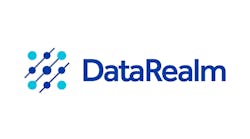In a move that can only enhance its aspirations to be considered an independent research body, the Abnormal Situation Management (ASM) Consortium is to make a selection of its research available for purchase. Subjects addressed by the consortium range from the effects of organizational structures on plant operations to the maintenance of hardware and software platforms that support process control.
Although the consortium has a total of 13 members, including such heavyweights as ConocoPhillips, Exxon Mobil and BP, the fact that it is led by Honeywell, which is the only process automation major among its number and, hence, the only one to be able to draw on its findings, has led to its being regarded, rightly or wrongly, by the rest of the process automation industry as essentially a Honeywell front. Making the results of its research available for purchase may go some way to dispelling that impression, although the degree to which it does so will to some extent depend on what it makes available and how far that availability extends to any or all of Honeywell’s competitors.
Design best practice
To that end, it’s encouraging to note that the first in what is said to be a series of planned publications from the consortium to be put on sale focuses on “Effective Operator Display Design,” one of the areas of consortium activity from which Honeywell has in the past claimed to have derived considerable benefit and competitive advantage. Priced at $150, it comprises a compilation of real-world experiences from consortium members who have implemented HMI design best practices in their own plants in the chemical and refining industries. Aimed at operations managers, operators, process engineers, system design engineers and safety and reliability engineers with responsibility for improving the interaction between automation systems and operators, the guidelines provide as a set of structured best practices to guide the design and deployment of operator interfaces that enable more effective operator behaviours.
Comparisons?
Publication of the ASM Consortium’s guidelines will enable comparisons to be made with other thinking in this area including that of NAMUR and of the various enquiries into major incidents such as the accidents at Milford Haven in 1994 and at Texas City and Buncefield in 2005. “Plant incidents are estimated to cost the chemical and refining industries anywhere between 3% and 8% of revenue, and poor or ineffective operator displays can play a major role in those incidents,” said ASM Consortium director Peggy Hewitt. “Research shows that improving HMI displays using ASM guidelines improves the operator’s ability to prevent, respond to and mitigate potentially hazardous incidents. “Effective Operator Display Design” shares those insights to help keep plants running safely and efficiently.” More information about purchasing this and future ASM Consortium publications is available from www.asmconsortium.net.
Still on the educational theme, Honeywell has launched a new Web site designed to deliver ideas, information and tools to help maximize plant performance and derive maximum benefit from existing assets. TheOptimizedPlant.com focuses on four key strategies ― cutting maintenance costs; reducing risk and improving cash flow; implementing high-ROI solutions; and driving down operational costs ― and includes videos, podcasts, white papers, case studies and Web seminars. Specific topics covered include extending the life of current assets, improving product quality, reducing maintenance costs through the use of certified recycled parts, installing applications to reduce energy consumption, implementing cost-effective migration strategies, reducing raw materials costs, optimizing existing advanced applications and complying with regulations.



